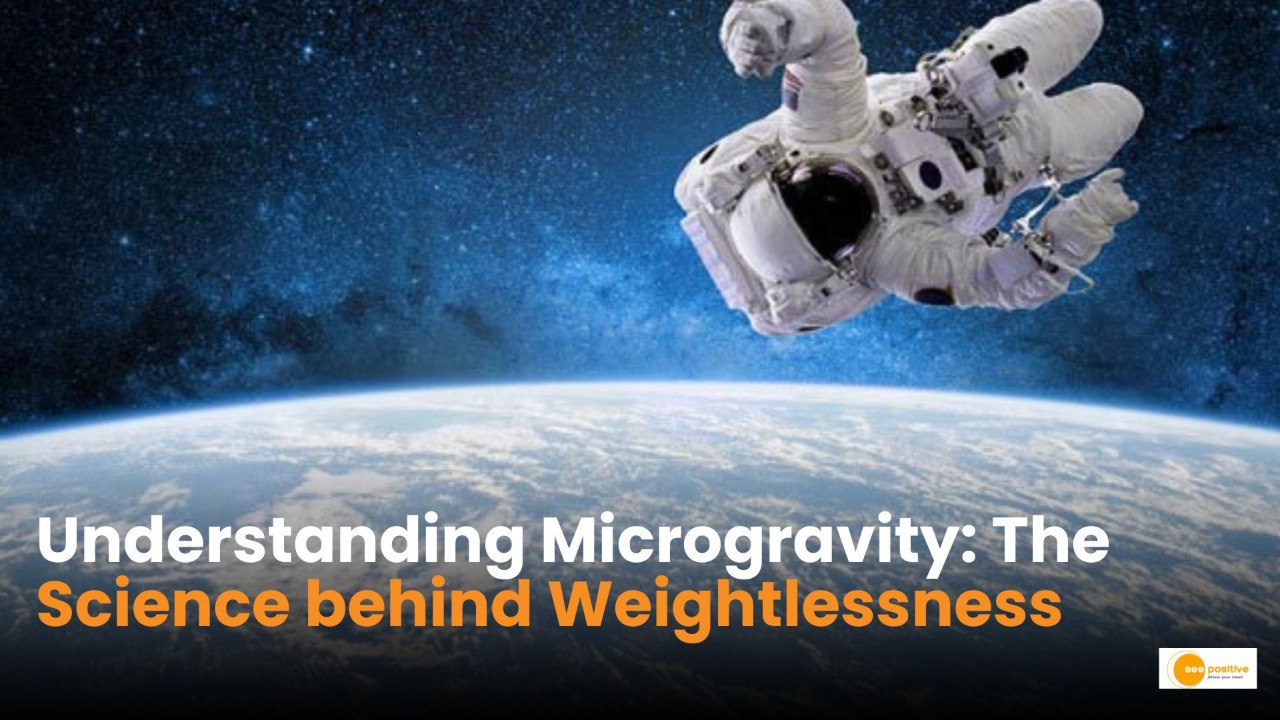Living in Space: Microgravity is the condition in space in which objects or people experience very small amounts of gravitational force. It’s a state where the gravitational force is so weak that objects appear to float or move as though they have no weight.
In space, astronauts experience microgravity because they are in a continuous state of freefall. Objects and people inside appear to float.
This unique environment is used for scientific research in biology, physics, and other fields, as it allows scientists to study processes without the interference of gravity. In this article, read about this pretty fascinating phenomenon and its consequences faced later by astronauts.
What is Microgravity?
When one is in space, there is a sense of weightlessness. This is microgravity because the gravitational pull gets weaker in space. Or simply put, microgravity is a condition in space where objects and people experience very little gravitational pull and hence feel weightless.
One feels typically around 1/100th of the Earth’s normal gravity. It’s often called “zero gravity” or “weightlessness,” but it’s not actually the complete absence of gravity.
Feeling of freefall or weightlessness
Microgravity creates the sensation of weightlessness, even though gravity is still acting on them. Microgravity occurs when an object or person is in freefall, meaning they are falling towards the Earth (or another celestial body) at the same rate as their surroundings.
In space, astronauts aboard spacecraft or space stations experience microgravity because the station is in a continuous state of freefall as it orbits Earth. Objects and people inside the station appear to float because everything is falling at the same rate.
Astronauts can move heavy objects much more easily
Astronauts can move heavy objects much more easily in microgravity than on Earth because there’s no gravity pulling them down or adding weight to the object. Since the object is essentially weightless, it becomes easier to push, pull, or lift it, even if it’s large or cumbersome. Although lifting or moving heavy objects may seem easier, astronauts need to be careful with this ease of movement, as a small push can result in them floating uncontrollably in the opposite direction if they don’t have a way to stabilize themselves.
Consequences for astronauts
Microgravity can have several harmful effects on astronauts due to the lack of normal gravitational forces on the body. When in microgravity, muscles don’t have to support the body against gravity, so they weaken and shrink over time. bodily fluids such as blood and lymph move upwards towards the upper body and head, rather than staying in the lower limbs like they do on Earth. Also, there are other cardiovascular and physiological changes that may occur. To mitigate these effects, astronauts follow rigorous exercise regimens, use special equipment, and undergo medical monitoring.
Simulating microgravity on Earth
Yes, it can be done! Since true microgravity conditions can only be found in space, scientists use a few methods to replicate it on Earth. The 2D-clinostat and 3D-clinostat are two key devices used for this purpose.
Simulating microgravity on Earth is important for conducting experiments and studying how various systems react to the lack of gravitational force.
Also Read: https://seepositive.in/innovationtech/know-all-about-starliner-mission-delay-and-consequences/


